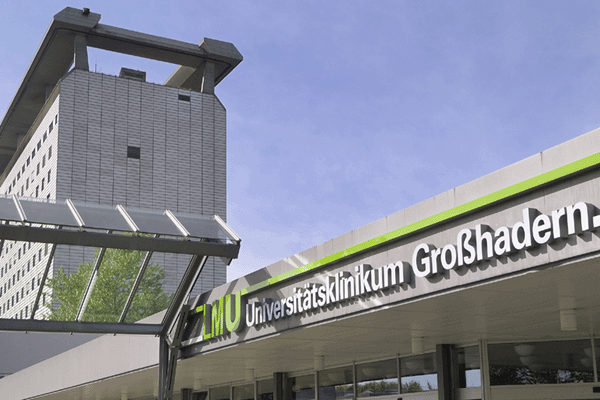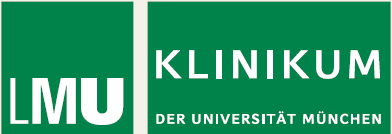Vibe delivers effective and secure team collaboration with full mobile support for ease of use.
The University Hospital of Munich (LMU), Germany, is a centre of high-end medicine, medical innovation and research, providing the best possible treatment to patients. With more than 2.000 beds and 10,000 staff LMU is a highly advanced hospital with 45 clinics, institutes and departments covering all fields of medicine. With its two campuses in Grosshadern and in the city centre, it is one of the largest hospitals in Europe. Employees of the Medical Centre represent 90 countries while Hospital and Medical Faculty programmes support patient care and research projects in several countries around the world.
The Department of Medical Technology and IT (MIT) is responsible for supporting the IT infrastructure. Safeguarding the infrastructure operation, as well as information processing for healthcare, research, and teaching purposes, reflects its core business.
Challenge
As patient data is held by the MIT department, security and data protection are extremely important. However, in an increasingly globalised world, it is vital that medical professionals can freely communicate and collaborate with other medical institutions in Germany, or elsewhere in the world. Since this type of collaboration often involved the exchange of data, it created compliance and privacy issues because security could be potentially compromised.
 Jürgen Primbs, Project Manager for the hospital, explains the dilemma:
Jürgen Primbs, Project Manager for the hospital, explains the dilemma:
“We used SharePoint for our intranet, but this didn’t provide the opportunity to securely collaborate with external audiences. We were relying on a system of just telling people what they could and could not share.
“Patient data could obviously not be shared but working documents in a team environment could. We decided we needed more structure to allow for much better team collaboration.”
Solution
Micro Focus® Vibe was used elsewhere in the University Hospital and was recommended to Mr. Primbs by a colleague who had evaluated other collaboration solutions. Vibe is designed to bring people, projects, and processes together in one secure place to enhance team productivity. Within two months, the MIT team was live with Vibe. Mr. Primbs notes:
“It was crucial for us that we could use Vibe out-of-the-box and that it would give us the platform support, in particular mobile, that we required. We liked that we didn’t need any programming knowledge and the set-up was a simple click-and-go process. Following implementation we were operational straightaway and Vibe soon became a key part of life for us.”
Local implementation partner Code and Concept trained the IT team on making the most optimum use of Vibe; implementing workflows and complex use cases, and providing Vibe project management workshops. Code and Concept also ensures Vibe remains current and is maintained in the context of the entire IT infrastructure.
Vibe’s 1,200 users particularly like its mobile capabilities, with a lightweight, secure, and easy-to-use mobile user interface that presents a specialised view of Vibe workspaces. It includes a starting home page with quick links to the most commonly used features, such as workspaces, favourites, micro-blogs, and teams.Mr Primbs says:
“It is interesting to watch the Vibe user adoption. Typically, at the start of a project, the team will use Vibe to share working documents. Soon they start to realize the potential, and before we know it, Vibe is used for blogs, wikis, and discussion forums, all promoting more effective team collaboration.”
Data and documents are ubiquitously available so if employees attend a conference, there is no need to bring a USB stick. The data can be accessed from anywhere using a standard web data connection, regardless of location. This prevents version control issues and makes for a much more productive working environment, as Mr Primbs comments:
“If any questions come up during a presentation, I just access my work files and deal with them directly.”
Occasional Vibe users like the clarity and simplicity of the landing pages, making it easy to create management reports. Landing pages are designed so that internal teams and communities can have a one-stop place to communicate within teams.
Vibe has not been introduced just as a communication and collaboration platform, but it is also used for hospital project management. The global project office manages over 60 projects led by different teams throughout the university group. Everything is captured in Vibe to ensure practical support.
Mr Primbs concludes:
“It is almost impossible now to imagine life without Vibe and Code and Concept to support us. We have strict workflow processes which ensures no patient data is shared externally and we have seen the use of Vibe increase dramatically over the last four years.
From a tool which was mainly used to share work documents, we have evolved to creating a much more productive user community who have embraced all that Vibe has to offer to improve collaboration.”
Code and Concept
 Christian Giese, the Code and Concept consultant who worked on the project comments: “Every Micro Focus Vibe installation has a focus on a certain set of Vibe’s facets. In the case of the University Hospital of Munich (LMU), the most important facets were information security and ubiquitous access to information, a combination that is, by definition, diametrically opposed.
Christian Giese, the Code and Concept consultant who worked on the project comments: “Every Micro Focus Vibe installation has a focus on a certain set of Vibe’s facets. In the case of the University Hospital of Munich (LMU), the most important facets were information security and ubiquitous access to information, a combination that is, by definition, diametrically opposed.
“This objective needed the correct combination of several measures. First, Vibe was configured in the right way to keep all information secure - especially person-related data - leveraging methods such as layered access control, restrictive templates and strict administrative processes.
“Features used were of course the Form and View designers, custom Vibe access roles, the administrative access control settings, role conditions, and the template configurator.
“The next stage in the configuration process was focused on giving users easy access to the information they are allowed to see. The “hiding of forbidden information” is built transparently into Micro Focus Vibe. The solution here aims not just at enabling retrieval, but of course finding the information first. To give users an easy way of accessing the data, a set of landing pages was created together with an index, providing navigation to any and all information without compromising security. The extremely fast and powerful search of Vibe does the rest.
“To fulfil data protection requirements, the systems that Vibe runs on must be in different security and hardware domains and must be split network wise. Vibe’s Tomcat is a standalone install, but the database, the indexers, the attachment storage as well as the access path for the user all are routed through different networks and are stored and running in different hardware zones.
“Code and Concept often build solutions like this for its customers. A very large percentage of Code and Concept’s projects do not need custom code at all; current needs are factored in dynamically.”
This article was first published in OHM Issue 38 (2017/3), p30-31.



